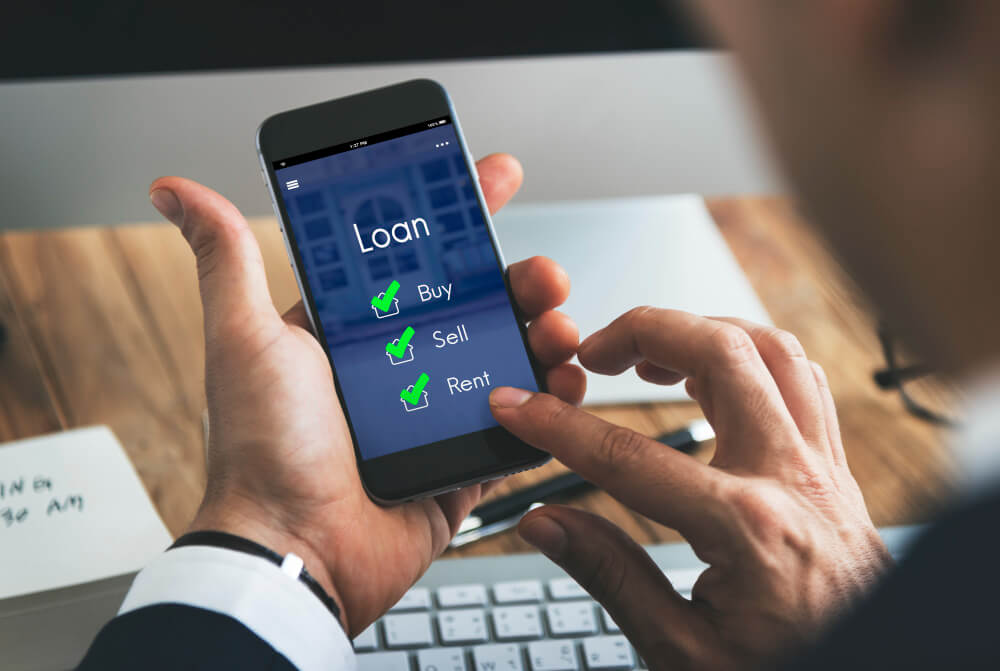When was the last time you walked into a bank to pay a bill or check your balance? For most people, the answer is “not recently.” Instead, they open an app.
That’s why mobile banking app development is now a top priority for banks and fintech startups across the USA, UK, and beyond.
Customers expect more than convenience; they want security, speed, and personalized experiences that fit into their everyday lives. For financial businesses in the USA, UK, and across global markets, this demand translates into a race to deliver smarter banking app development solutions.
But here’s the catch: creating a banking app isn’t just about adding a transfer button. Success requires,
- Meeting compliance regulations
- Designing for user-friendly security
- Building features customers actually use
- Integrating with third-party services
This is why more financial institutions are investing in mobile banking app development services. Done right, it opens the door to stronger customer loyalty, new revenue streams, better engagement, and a competitive edge. Not sure where to start?
As a top mobile app development company in the USA, Vrinsoft Technology can help you. We have worked with a couple of fintech startups worldwide for mobile banking apps development from concept and UI/UX design to development, testing, and deployment.
So, in this guide, we’ll cover everything you need to know about finance mobile app development, from features and costs to the step-by-step process and the future of banking apps development.
Mobile Banking App Development: A Quick Overview
If you’re running a bank or building a fintech startup, you already know customers expect financial services at their fingertips. Mobile banking app development makes that possible. It’s the process of creating secure, user-friendly apps that handle everything from account access and transfers to digital wallets and investment tools.
For banks, banking app development reduces branch dependence, cuts costs, and improves customer loyalty. For fintech, mobile banking application development is the fastest way to compete with legacy businesses and launch digital-first solutions.
The opportunity is massive. In the USA and UK, millions of users open their mobile banking apps daily, while global adoption keeps climbing. Whether your goal is higher engagement, stronger security, or expanding into new markets, investing in finance mobile app development is the foundation of future growth.
A Quick Overview of the Mobile Banking App Market Value
The mobile banking market has shifted from being a convenience feature to a primary channel for customer engagement. Recent data highlights how quickly users are moving away from branches and adopting app-based services.
- According to the American Bankers Association, 55% of U.S. bank customers now use mobile apps as their main way to manage accounts, compared to only 8% who visit branches regularly.
- 68% of millennials now prefer mobile banking apps as their primary channel.
- More than 60% of all U.S. banking transactions are now initiated through mobile devices.
- The broader digital banking platform market is also growing, valued at around USD 8.12 billion in 2025, up from USD 7.33 billion in 2024.
- It is further projected to grow to USD 14.66 billion by 2029, at a compound annual growth rate of 15.9%
This data makes one point clear: mobile banking apps are the future foundation of customer engagement, retention, and revenue for banks and fintech startups.
Benefits of Banking App Development for Financial Businesses
If you’re running a bank or fintech startup, investing in mobile banking app development is a lot more than just a tech upgrade. The right app can transform how your customers interact with your services while opening doors to growth and efficiency.
Let’s have a look at the benefits,
1. Access Anytime, Anywhere
Your customers want control over their finances 24/7. With banking app development, they can check balances, transfer funds, or pay bills without stepping into a branch. It’s convenience that builds loyalty.
2. Cut Costs and Boost Efficiency
Fewer manual processes, less branch traffic, and reduced support overhead. Mobile banking application development helps you serve more users with fewer resources, freeing up your team to focus on strategy and innovation.
3. Keep Customers Engaged
Push notifications, personalized dashboards, and in-app alerts make users return to your app daily. Finance mobile app development enables features like spending insights, savings goals, and real-time alerts that keep your brand top of mind.
4. Strong Security You Can Count On
Biometric logins, two-factor authentication, and encrypted transactions ensure customer data stays safe. Apps built with mobile banking development services meet compliance standards like PSD2, GDPR, and PCI DSS.
5. Open New Revenue Streams
Cross-sell loans, cards, or premium features directly through the app. A robust banking mobile app development strategy can turn your app into a revenue-generating platform.
When done right, mobile banking app development services not only improve customer satisfaction but also increase profitability.
Types of Mobile Banking Application Development for Banks and Startups
Not all banking apps development projects are the same. Depending on your goals, you might focus on,
- Retail banking apps: Traditional banks offering digital access to accounts, cards, and loans.
- Neobanking apps: Digital-only banks like Chime or Revolut, built entirely on finance mobile app development.
- Corporate banking apps: Tailored for business clients with payroll, invoicing, and bulk payment features.
- Wealth management apps: Focused on investments, savings, and portfolio tracking.
Understanding which type fits your finance business ensures your mobile banking development strategy aligns with customer needs.
Core Features in Mobile Banking App Development Services
Every banking mobile app development project starts with essential features that customers expect,
- Account management: View balances, recent transactions, and account details.
- Fund transfers: Send money instantly between accounts or to other users.
- Bill payments: Utility bills, credit cards, and recurring subscriptions.
- Expense tracking: Dashboards and charts to monitor spending.
- Biometric authentication: Face ID, Touch ID, and PIN codes for added security.
These features form the foundation of mobile banking application development. Without them, your finance mobile app development project won’t meet user expectations.
Advanced Features in Banking Mobile App Development
To stand out in the crowded market, advanced functionality is essential,
- QR code payments for quick transactions in stores.
- Virtual cards and wallet integration for digital-first customers.
- Cashback and rewards to encourage frequent app usage.
- ATM and branch locator powered by GPS.
- 24/7 chatbot support for instant query resolution.
- Multi-language support for banks serving global audiences.
- AI-driven analytics for personalized insights and fraud alerts.
- Credit score tools for monitoring and managing credit health.
- Peer-to-peer lending integration within the app.
- Cardless cash withdrawal for secure money access.
- Crypto exchange and payment options.
- Instant card issuance and control for convenient banking.
- Voice-enabled banking for hands-free account management.
- Gamification to engage users with rewards and challenges.
- Carbon footprint tracking for eco-conscious spending.
- Contextual smart nudges for timely financial tips.
These features help fintech startups differentiate their mobile banking development approach from traditional competitors.
Mobile Banking Application Development Process: Step-by-Step Guide
Launching a successful mobile banking app development project requires a well-structured approach. Skipping steps can lead to delays, security issues, or poor user experiences.
Here’s a detailed step-by-step guide,
1. Research and Discovery
Before writing a single line of code, you need a deep understanding of your objectives. Define what your bank or fintech startup aims to achieve with banking app development. Is it increasing customer engagement, reducing operational costs, or offering new services?
Next, study your audience and their pain points. What features do users expect in a mobile banking application development project? Finally, analyze competitors like Monzo, Revolut, and Chime to understand what works and where gaps exist. This research lays the foundation for a product that meets real customer needs.
2. Compliance and Security Planning
Security is non-negotiable in finance mobile app development. Start by mapping out regulatory requirements such as PCI DSS, PSD2, GDPR, and CCPA. Each region may have specific compliance mandates, especially if you operate internationally.
Next, define security practices. Data encryption, tokenization, and secure APIs should be integral to your mobile banking app development services. Planning security early ensures your app is both safe and compliant from day one.
3. UX/UI Design and Prototyping
A great banking app development project isn’t just functional, but intuitive. Start with wireframes to map user flows and interactions.
Prototype testing helps validate ideas with real users before actual development. Feedback at this stage ensures the app is easy to navigate, visually appealing, and meets customer expectations.
4. Choosing the Right Tech Stack
Decide whether to build a native or cross-platform app. Native apps use Swift/Xcode for iOS and Kotlin/Java for Android, offering top performance. Cross-platform frameworks like Flutter or React Native save development time and costs.
Cloud infrastructure is another key factor. Scalable architecture supports future growth and ensures smooth performance under high user load, a critical consideration for mobile banking application development.
5. Development and Third-Party Integrations
Once the design and tech stack are ready, development begins. Core functionality is coded, and integrations with APIs such as Plaid (banking data), Onfido (identity verification), or Twilio (notifications) are implemented.
These integrations enhance features without reinventing the wheel, allowing your mobile banking development project to deliver advanced services efficiently.
6. Testing and QA
Testing ensures your app is reliable and secure. Functional testing confirms all features work correctly, while penetration testing identifies vulnerabilities. Usability testing ensures a smooth, user-friendly experience.
Regular QA cycles throughout development minimize post-launch issues, making the final product robust and trustworthy.
7. Deployment and Ongoing Support
Finally, launch the app on major app stores and monitor performance. Gather user feedback, fix issues, and roll out updates regularly.
Ongoing support is vital for banking mobile app development services, as security patches, feature upgrades, and user experience improvements ensure long-term success and customer satisfaction.
Challenges in Banking Application Development and How to Overcome Them
Building a mobile banking app comes with its own set of hurdles. Understanding these challenges and how to overcome them is critical for successful mobile banking app development.
Challenge 1: Biometric Complexities
Fingerprint and facial recognition systems must work flawlessly across different devices. Poorly implemented biometrics can frustrate users and reduce trust in your app.
Solution: Integrate advanced biometric SDKs and conduct extensive testing across devices. Mobile banking application development services that prioritize secure and accurate biometric authentication enhance user trust and improve adoption rates.
Challenge 2: Regulatory Shifts
Compliance rules vary across regions and change frequently. For example, PSD2 in Europe, GDPR in the UK, and CCPA in the USA each have unique requirements.
Solution: Build compliance checks into your finance mobile app development process from day one. Partner with experts who stay updated on regulations, ensuring your app remains compliant and secure across all target markets.
Challenge 3: Data Protection Risks
Banking apps handle sensitive financial data, making them prime targets for cyberattacks. Weak encryption or poor security practices can lead to breaches and loss of user trust.
Solution: Implement end-to-end encryption, secure APIs, tokenization, and regular penetration testing. Robust mobile banking development prioritizes data security, protecting both your institution and your customers.
Challenge 4: High Competition
The market is saturated with banking apps offering similar features, making differentiation difficult.
Solution: Focus on user experience, advanced features, and personalized services. Banking mobile app development services that combine innovation with reliability can help your app stand out and retain customers.
Technology Trends Driving Mobile Banking Development
Banking apps development is constantly shaped by new technologies. Current trends include,
- Artificial intelligence: Chatbots, fraud detection, and predictive analytics.
- Blockchain: Secure, transparent transaction recording.
- Biometric advancements: Iris scans and voice recognition for stronger logins.
- Hyperautomation and RPA: Automating back-office processes.
- Personalization engines: Using customer data to recommend financial products.
Fintech startups adopting these trends in mobile banking development gain a competitive advantage.
Cost of Banking Apps Development for FinTech and Banks
Budgeting for mobile banking app development depends on complexity, features, and region. Here’s a breakdown,
| Type of App | Estimated Cost |
| MVP Banking App | $20,000 – $50,000 |
| Full-Scale App | $40,000 – $180,000+ |
| Large-Scale Fintech App | $180,000 – $300,000+ |
Factors affecting cost include the number of features, integrations, design complexity, compliance requirements, and whether you choose native or cross-platform development.
Competitor Insights in Finance Mobile App Development
Looking at market leaders helps identify best practices,
- Chime: Simplified design, zero-fee accounts.
- Revolut: Currency exchange and international transfers.
- N26: Expense tracking with instant push notifications.
- Monzo: Strong customer engagement through transparency and savings tools.
Each of these companies used mobile banking app development services strategically to win customers. Studying them provides lessons for banks and fintech startups building their own apps.
Why Choose Vrinsoft Technology for Mobile Banking App Development Services?
When it comes to mobile banking app development, partnering with the right team ensures success. Here’s why banks and fintech startups choose us,
- End-to-end development: Complete solutions from ideation to launch.
- Global expertise: Finance mobile app development for the USA, UK, and beyond.
- Security-first approach: Compliance-ready apps with advanced encryption and authentication.
- Scalable architecture: Apps that grow with your customer base.
- Agile delivery: Fast, reliable development without compromising quality.
Our team of mobile app developers for hire has helped financial institutions design and launch banking apps development projects that reach millions of users. By combining security, usability, and innovation, we create mobile banking applications that not only meet regulatory standards but also engage and retain customers.
We can help you turn your banking app vision into a robust, scalable, and user-friendly reality.
Build the Future with Vrinsoft’s Banking Mobile App Development Services
The banking world is evolving, and customers expect more than a branch. They want instant, secure, user-friendly, and personalized access from their mobile devices. Mobile banking app development gives banks and fintech startups the chance to meet these expectations while building stronger customer relationships and streamlining operations.
If you are ready to start your journey with mobile banking application development, now is the time. With Vrinsoft Technology, you can launch a feature-rich banking app that combines advanced security and complete compliance.
Don’t let your competitors capture the digital-first audience. Hire dedicated developers and take the first step toward a future-proof banking experience today.
Book a free consultation today to discuss how you can start building a mobile banking application that delivers exceptional results and keeps your customers coming back.
Start Your Free Conversation Now
USA: +1 747 228 3878
Australia: +61 480 027 297
UK: +44 7520 641447
Kuwait: +965 94914890
Email: sales@vrinsofts.com
FAQs – Mobile Bank Application Development
Here are the most frequently asked questions with clear answers to guide your decision-making,
Q1. How much does it cost to develop a mobile banking app?
Ans: The cost of mobile banking app development depends on features, security requirements, design complexity, and integrations. On average, banking app development can range from $20,000 to $300,000 or more, depending on whether you need a basic solution or a fully customized platform.
Q2. How do mobile banking apps make money?
Ans: Most banking apps generate revenue through transaction fees, premium features, loan or credit card offers, and partnerships with third-party services. For fintech startups, in-app advertisements and subscription-based models are also popular.
Q3. What are the top use cases of banking mobile app development?
Ans: The leading use cases of banking mobile app development include,
- Account management and real-time balance checks
- Mobile payments and contactless transactions
- Fund transfers between accounts or to other users
- Bill payments and recurring payment setup
- Personal finance tracking and budgeting tools
- Fraud alerts and transaction notifications
- Customer support through chatbots or virtual assistants
Advanced finance mobile app development also adds investment management, insurance, and lending options.
Q4. What does a mobile banking apps development take to retain users and increase engagement?
Ans: User retention relies on building apps that are secure and easy to use. Personalized dashboards, AI-driven recommendations, reward programs, and reliable customer support are some of the most effective strategies to increase engagement in mobile banking application development.










